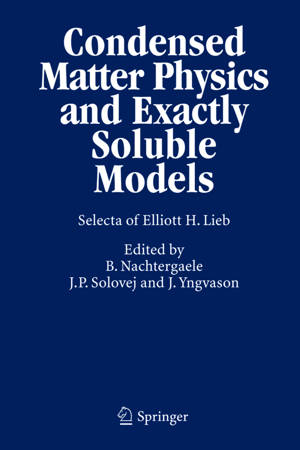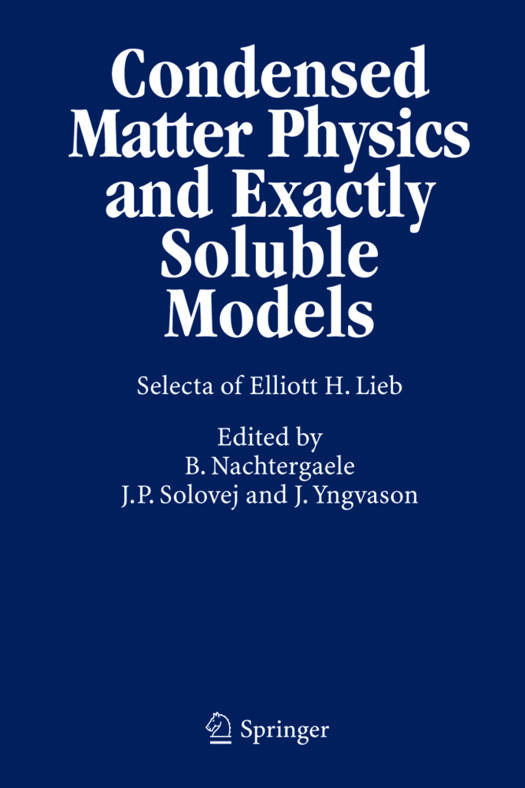
- Afhalen na 1 uur in een winkel met voorraad
- Gratis thuislevering in België vanaf € 30
- Ruim aanbod met 7 miljoen producten
- Afhalen na 1 uur in een winkel met voorraad
- Gratis thuislevering in België vanaf € 30
- Ruim aanbod met 7 miljoen producten
Zoeken
Condensed Matter Physics and Exactly Soluble Models
Selecta of Elliott H. Lieb
North Atlantic Treaty Organization
Hardcover | Engels
€ 105,45
+ 210 punten
Omschrijving
This is the third Selecta of publications of Elliott Lieb, the first two being Stabil- ity of Matter: From Atoms to Stars, edited by Walter Thirring, and Inequalities, edited by Michael Loss and Mary Beth Ruskai. A companion fourth Selecta on Statistical Mechanics is also edited by us. Elliott Lieb has been a pioneer of the discipline of mathematical physics as it is nowadays understood and continues to lead several of its most active directions today. For the first part of this selecta we have made a selection of Lieb's works on Condensed Matter Physics. The impact of Lieb's work in mathematical con- densed matter physics is unrivaled. It is fair to say that if one were to name a founding father of the field, Elliott Lieb would be the only candidate to claim this singular position. While in related fields, such as Statistical Mechanics and Atomic Physics, many key problems are readily formulated in unambiguous mathematical form, this is less so in Condensed Matter Physics, where some say that rigor is "probably impossible and certainly unnecessary". By carefully select- ing the most important questions and formulating them as well-defined mathemat- ical problems, and then solving a good number of them, Lieb has demonstrated the quoted opinion to be erroneous on both counts. What is true, however, is that many of these problems turn out to be very hard. It is not unusual that they take a decade (even several decades) to solve.
Specificaties
Betrokkenen
- Auteur(s):
- Uitgeverij:
Inhoud
- Aantal bladzijden:
- 675
- Taal:
- Engels
Eigenschappen
- Productcode (EAN):
- 9783540222989
- Verschijningsdatum:
- 29/11/2004
- Uitvoering:
- Hardcover
- Formaat:
- Genaaid
- Afmetingen:
- 156 mm x 234 mm
- Gewicht:
- 1133 g

Alleen bij Standaard Boekhandel
+ 210 punten op je klantenkaart van Standaard Boekhandel
Beoordelingen
We publiceren alleen reviews die voldoen aan de voorwaarden voor reviews. Bekijk onze voorwaarden voor reviews.











